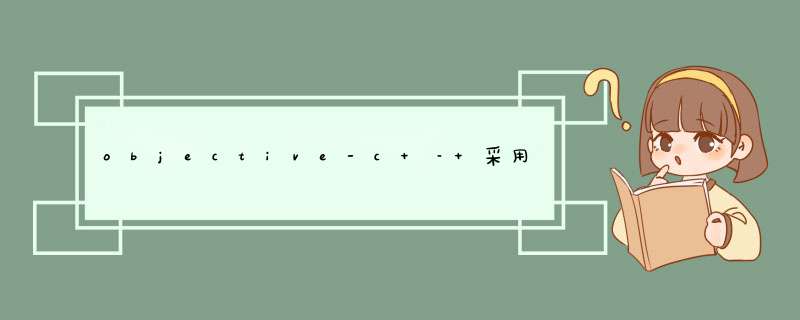
谢谢你的帮助.
这是我的.h:
#import <UIKit/UIKit.h>@interface Pedal_ProtocolVIEwController : UIVIEwController <UIKeyinput,UITextinput>{UITextFIEld *myTextFIEld;}@property (nonatomic,retain) IBOutlet UITextFIEld *myTextFIEld;@end 这是我的.m:
#import "Pedal_ProtocolVIEwController.h"@implementation Pedal_ProtocolVIEwController@synthesize myTextFIEld;- (voID)dealloc{ [super dealloc];}- (voID)dIDReceiveMemoryWarning{ // Releases the vIEw if it doesn't have a supervIEw. [super dIDReceiveMemoryWarning]; // Release any cached data,images,etc that aren't in use.}#pragma mark - VIEw lifecycle// Implement vIEwDIDLoad to do additional setup after loading the vIEw,typically from a nib.- (voID)vIEwDIDLoad{[super vIEwDIDLoad];[myTextFIEld canBecomeFirstResponder];[myTextFIEld becomeFirstResponder];}- (voID)vIEwDIDUnload{ [super vIEwDIDUnload]; // Release any retained subvIEws of the main vIEw. // e.g. self.myOutlet = nil;}- (BOol)shouldautorotatetoInterfaceOrIEntation:(UIInterfaceOrIEntation)interfaceOrIEntation{ // Return YES for supported orIEntations return YES;}#pragma mark -#pragma mark UIKeyinput Protocol Methods- (BOol)hasText { return NO;}- (voID)insertText:(Nsstring *)theText {}- (voID)deleteBackward {}- (BOol)canBecomeFirstResponder { return YES; }#pragma mark -#pragma mark UITextinput Protocol Methods- (Nsstring *)textInRange:(UITextRange *)range { return @"";}- (voID)replaceRange:(UITextRange *)range withText:(Nsstring *)text {}- (voID) setSelectedTextRange: (UITextRange *) range {}- (UITextRange *) markedTextRange { return nil;}- (NSDictionary *) markedTextStyle { return nil;}- (voID) setMarkedTextStyle: (NSDictionary *) style {}- (voID)setMarkedText:(Nsstring *)markedText selectedRange:(NSRange)selectedRange {}- (voID) unmarkText {}- (UITextposition *) endOfdocument { //DOWN KEY NSLog(@"Down"); return nil;}- (UITextposition *) beginningOfdocument { //UP KEY NSLog(@"UP"); return nil;}- (UITextRange *)textRangeFromposition:(UITextposition *)fromposition toposition:(UITextposition *)toposition{ return nil;}- (UITextposition *)positionFromposition:(UITextposition *)position offset:(NSInteger)offset{ return nil;}- (UITextposition *)positionFromposition:(UITextposition *)position inDirection:(UITextLayoutDirection)direction offset:(NSInteger)offset { return nil;}- (NSComparisonResult) compareposition: (UITextposition *)position toposition: (UITextposition *)other { return NSOrderedSame;}- (NSInteger) offsetFromposition: (UITextposition *)from toposition: (UITextposition *)toposition { return 0;}- (voID) setinputDelegate: (ID <UITextinputDelegate>) delegate {}- (ID <UITextinputDelegate>) inputDelegate { return nil;}- (ID <UITextinputTokenizer>) tokenizer { return nil;}- (UITextposition *)positionWithinRange:(UITextRange *)range farthestInDirection:(UITextLayoutDirection)direction { return nil;}- (UITextRange *) characterRangeByExtendingposition: (UITextposition *) position inDirection: (UITextLayoutDirection) direction { return nil;}- (UITextWritingDirection) baseWritingDirectionForposition: (UITextposition *)position inDirection: (UITextStorageDirection)direction { return 0;}- (voID) setBaseWritingDirection: (UITextWritingDirection)writingDirection forRange:(UITextRange *)range {}- (CGRect) firstRectForRange: (UITextRange *) range { return CGRectZero;}- (CGRect) caretRectForposition: (UITextposition *) position { return CGRectZero;}- (UITextposition *) closestpositiontopoint: (CGPoint)point { return nil;}- (UITextposition *) closestpositiontopoint: (CGPoint)point withinRange: (UITextRange *) range { return nil;}- (UITextRange *) characterRangeAtPoint: (CGPoint)point { return nil;}- (UITextRange *) selectedTextRange { return [[UITextRange alloc]init];}@end解决方法 您已在UIVIEwController中采用了UIKeyinput.请注意您输入的继承定义: @interface Pedal_ProtocolVIEwController : UIVIEwController <UIKeyinput,UITextinput>{ 你在这里说过“这是一个实现UIKeyinput和UITextinput的视图控制器.”这两个协议适用于UIResponder子类,如UIVIEw和子类或UIVIEw. UIVIEwController不是一个这样的类,也许不是处理文本输入的最佳类.
VIEw控制器管理视图.他们不是自己的观点.
您可以(而不是文本输入协议)只使用隐藏的文本字段(例如您已有的字段).只需创建一个NSObject的子类,它实现文本字段的委托,并将其指定为文本字段的委托.然后,在-vIEwDIDAppear:中,在文本字段上调用-becomeFirstResponder以关注该字段.您可以使用一些黑客来隐藏键盘.
这种方法通常用于游戏和游戏支持库中以显示软件键盘.它甚至适用于iOS 3.1.3及更早版本(考虑到您正在为iPad开发,这对您来说不是问题).
如果您将保留该设计(在视图控制器中处理输入),则可能需要这样做并使其工作.
-(BOol)canBecomeFirstResponder{ return YES;}-(voID)vIEwDIDAppear:(BOol)animated{ [super vIEwDIDAppear:animated]; [self becomeFirstResponder];} 请考虑使用UITextFIEld和委托来处理输入,或者在UIVIEw的子类中实现上述两个函数和UIKeyinput协议.
另请注意,您不需要遵循UITextinput来获取按键; UIKeyinput就足够了.
附加说明:如果您决定子类化UIVIEw(与我使用隐藏的UITextFIEld一起使用;我还没有尝试子类化UIVIEwController来获取键盘输入),您需要将-becomeFirstResponder添加到-awakeFromNib:
-(voID)awakeFromNib{ [super awakeFromNib]; [self becomeFirstResponder];} 那就是你从一个笔尖加载UIVIEwController(以及UIVIEw).不这样做?尝试在-initWithFrame ::中添加它
-(ID)initWithFrame:(CGFrame)frame{ self = [super initWithFrame:frame]; if(!self) return nil; [self becomeFirstResponder]; return self;} 或者,在UIVIEwController的vIEwDIDLoad中:
// ... [self.vIEw becomeFirstResponder]; // ...
显然有很多方法可以做到这一点. 总结
以上是内存溢出为你收集整理的objective-c – 采用UIKeyInput协议从蓝牙键盘获取输入全部内容,希望文章能够帮你解决objective-c – 采用UIKeyInput协议从蓝牙键盘获取输入所遇到的程序开发问题。
如果觉得内存溢出网站内容还不错,欢迎将内存溢出网站推荐给程序员好友。
欢迎分享,转载请注明来源:内存溢出

 微信扫一扫
微信扫一扫
 支付宝扫一扫
支付宝扫一扫
评论列表(0条)